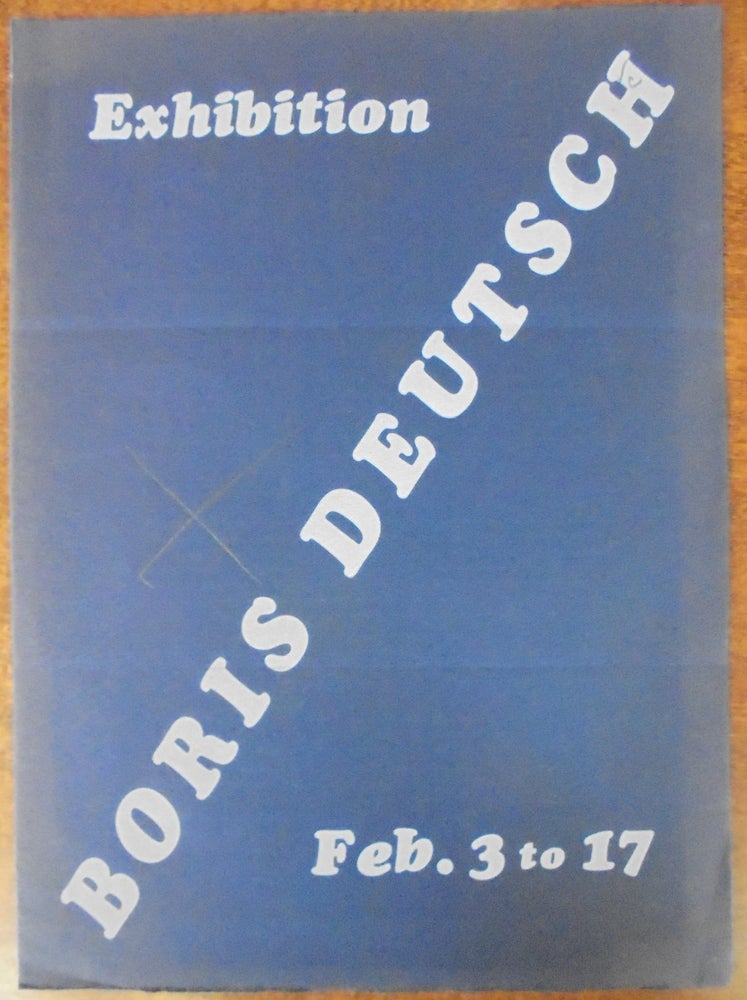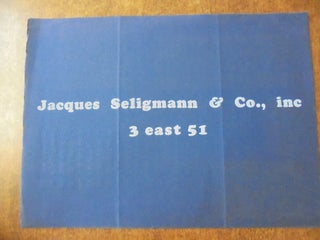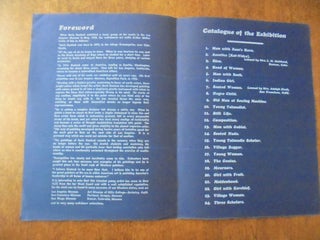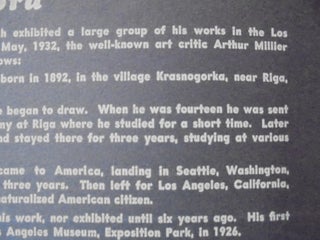Exhibition, Boris Deutsch, Feb. 3 to 17
New York: Jacques Seligmann & Co., Inc., 1933. Original. Ephemera. Navy blue paper with silver lettering, folded in two to 8.5 x 11 inches. No illlus. Good. Fading to very edges; old tri-fold marks (brochure stays flat); bend to lower outer corner, and barely-visible pencil "X" on front cover. Item #155285
Catalogue from Deutsch's exhibition at Seligmann's, February 3 to 17, 1933 (year not stated but researched), his first NY show (only one?). Included is a full-page foreword and the list of Deutsch's 24 works on exhibit. VERY scarce. Boris Deutsch (1892-1978) was a modernist figurative painter important in Southern California during the 1930s and 1940s. Before immigrating from Russia, he studied briefly in Riga at the art academy and with a commercial artist, and in 1912 he attended the Kunstgewerbemuseum, Berlin. After coming to the United States he spent three years in Seattle before settling in Los Angeles. He began exhibiting in 1922 and was one of the four organizers of the Group of Independent Artists exhibition in 1923 at the MacDowell Women’s Club in Los Angeles, the West Coast equivalent of the Armory Show. Deutsch was given his first solo exhibition in 1926 by the Los Angeles Museum and thereafter had numerous exhibitions in other cities, including a solo exhibition in New York in 1933. At times he supported himself by working as a commercial artist and set designer for motion pictures. He received numerous mural commissions sponsored by the New Deal projects, winning in 1941 the large competition to decorate the Terminal Annex Post Office in Los Angeles. In Russia Deutsch had studied for the rabbinate, and his Jewish heritage furnished him with subject matter and endowed his art with an emotional intensity. His first major series, on contemporary Jewish life, revealed a brooding, contemplative aspect and reflected his Talmudic studies. In the 1930s he began painting portraits of his wife, exploring the emotional power of form and color. In 1946 he won the third annual Pepsi-Cola Art Competition with his What Atomic War Will Do to You, 1946 (Magnes Museum, Berkeley). Late in life he turned to printmaking and experimented with monotypes.
Sorry, this book is not available.
Notify me when this comes back in stock.





